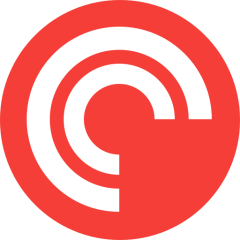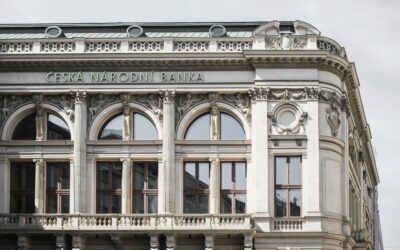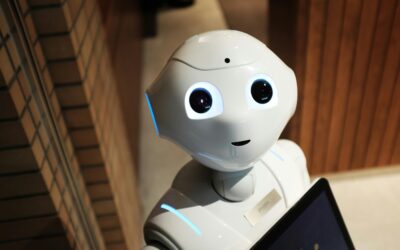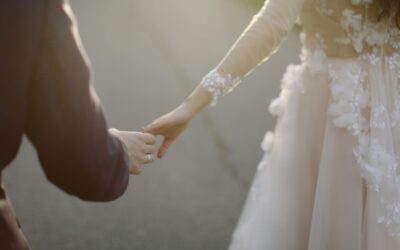First Dollar Coverage with Shane Foss
With more and more Americans opting out of major medical, what can be done to get them coverage? Shane Foss talks about the value and opportunity of first dollar coverage, how it works and who benefits!
Listen to us On
About the Episode
LifeBlood: We talked about first dollar medical coverage, the impact of the great resignation on hiring, employment and benefits, the challenge of getting affordable coverage from the employer and employee’s perspective, and what the options are with Shane Foss, Founder and CEO of Hooray Health.
Listen to learn who should be considering first dollar medical coverage!
For the Difference Making Tip, scan ahead to 16:07!
You can learn more about Shane at HoorayHealthCare.com, Twitter and LinkedIn.
Thanks, as always for listening! If you got some value and enjoyed the show, please leave us a review wherever you listen and subscribe as well.
You can learn more about us at MoneyAlignmentAcademy.com, Twitter, LinkedIn, Instagram, Pinterest, YouTube and Facebook or you’d like to be a guest on the show, contact George at Contact@GeorgeGrombacher.com.

George Grombacher
Lifeblood Host
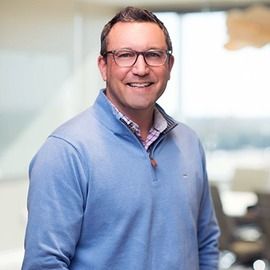
Shane Foss
Guest
Episode Transcript
Come on. strong, powerful Shane fosse has returned to lifeblood. Welcome back, Shane.
Shane Foss 0:17
Good to be back to.
george grombacher 0:19
Shane is the founder and CEO of horae. Health, they are a limited benefit medical plan provider built to us with a national provider network of retail clinics, and urgent care centers excited to have you back on. Shane, tell us a little about your personal life some more about your work and why
Shane Foss 0:35
you do what you do? Sure. So personal life my my youngest went off to college is here which was hard. So now we’re officially empty nesters, which is a weird phase in your life. You know, at first it’s really scary. And then it’s actually kind of cool. And but yeah, so that’s, that’s the big thing there. You know, my, my son now is, you know, graduated college and is working professional. So that’s exciting. But, you know, that’s, that’s fun. But doing what I do doing what I love, right, which is providing low cost health insurance options to too small and large businesses, right, just taking care of Americans that need to be get taken care of right now.
george grombacher 1:20
Nice. I appreciate that. different seasons of life, I was just telling you that my kids are turning two and five next month and and you’re in the
Shane Foss 1:29
thick of it. And you’re going to be there for a while. But enjoy every second of it. Because it goes quick.
george grombacher 1:34
Yeah. So so so the story goes, I appreciate that. So we talked last last July. So it’s been a little bit. Oh, geez, almost almost a year and a half at this point. Yeah. And a lot has certainly changed. I think that that minimum wage laws have probably gone into effect during that time. How are you seeing that impact your world?
Shane Foss 2:01
Well, I think, you know, really the biggest change, obviously COVID happened since we last spoke. And I think, you know, the biggest transition that’s happened, we call it the great resignation you had with COVID or prior to COVID, you had this really low. I mean, I think our unemployment rate was like three and a half percent 4%. It was you know, it was crazy. Well, well, then we went into COVID. In then you have all these furloughs and layoffs during this transition. And, you know, a lot of uncertainty. So obviously unemployment, you know, spikes. Well, now, you know, as we were talking earlier, you know, people have, you know, we had two and a half million people retire early. And as HR people, we were, we were waiting for this for 2030. Right? There’s going to be this flip of, there’s too many jobs, not enough people. Well, what’s happened is, you know, in April, this last year, we had 4 million people opt out of the job market, right, 4 million plus you got two and a half million retirees, of course, not including the people that, you know, passed away. So there’s this huge now there’s this inversion of there’s more jobs than people that take jobs. Right. And so there’s this gap. And prior to that, you know, it was low wages, no benefits were needed, you know, just you know, look, it was an employers market. Well, now, you’ve got wages going up, right, we were talking earlier, you know, we’re talking to some groups and, you know, their, their payroll has changed in the millions. But now even recruit, you know, we’ve got McDonald’s right over here paying 17 to $21 an hour now that, you know, they want to offer benefits. And so it’s a very competitive job market. And so that’s the big transition. And you see these employers trying to hang on to their employees. So not only is it pay, but its benefits. And so this year, we’ve seen a lot of a huge transition where our product was mainly for part time uninsured. You know, gig economy workers, where we’ve gotten a lot more into the full time employees which is really has been a great transition because there’s you’ve got the this this population that can’t afford a $3,000 deductible right? over 40% of Americans only have $400 in their bank account are less than $400. So a $3,000 deductible may be may as well be a million dollars. So they’re opting out of major medical even as a full time employee. And so, you know, we see a huge transition there. So first dollar coverage, which is what we offer is really attractive to them. And from an employer standpoint, they’re able to pay for 100% of it. And so it’s really, it’s really been a good transition for us. You know, it’s it’s going to be the next next Few years is going to be really, really interesting.
george grombacher 5:04
So refresh my memory. What do you mean by first dollar coverage?
Shane Foss 5:08
Sure. So we are a hospital indemnity and accident medical expense. So that means we don’t have a deductible, we pay a fixed amount. And so there’s, we pay first dollar. And so when you look at a traditional major medical plan, they pay after the deductible is met, right? Or, or coinsurance, right? So it’s a different, it’s a different plan. So we pay first dollar, so when, if I’m, you know, if I’m making $15 an hour, and I’ve got a couple 100 bucks in the bank, you know, I go to an urgent care, you know, it could be $400, well, that takes up all of my savings. And so I’m gonna avoid that with us, they’re able to go to the doctor, and we’ll pay that upfront through a contracted rate, and then they just don’t have to worry about it, right. So it’s, there’s no deductible to be met.
george grombacher 6:02
JOHN, it Okay, perfect. So I remember and this is going to be terrible because it’s possible you didn’t read this article that I read about, it was our clothes floating around the the internet talking about how some hamburger chain in Seattle paid their employees 25 bucks an hour, and how they only had to increase the cost of their burgers to like two bucks or something like that. And I appreciate that, that’s that that’s not real life. And here in the real world businesses, they, I think, want to do as right by their people as they possibly can. And the employees want to position themselves for success in the way that they, you know, can do that as well. So you talked about how some full time employees are opting out of major medical. So that is not obviously, you know, and then to be left with nothing, that is not good. So this correct dollar option? This is your you’re really stepping up to fill that need.
Shane Foss 7:02
Yes, absolutely. And so yeah, cuz, you know, when you’re even when you’re making less, or if you’ve got a family, and you’re, you know, you’re in that situation where you’re making even $25 an hour, every penny counts, right? And if you’re, if you’re paying for something, and then, you know, expected to pay more, to hit a, I mean, the majority of Americans, right, the majority of Americans have 12 $100 worth of medical expenses a year 1200 bucks. And so if you look at under our plan, we cover that, and, but you look at a high debt, or even a high deductible normal deductible plan right now, if you have $3,000, you know, so now you got not only are you paying for the insurance, you’re paying that 12 $100 and so the value proposition for an hourly employee, like that just isn’t there.
george grombacher 7:56
Got it. Appreciate that. Okay, so you mentioned that the next few years are going to be really interesting. What what what do you see coming?
Shane Foss 8:05
Well, you know, this shortage, you know, you Well, I think the pizza industry is a great in are a great example, you know, the shortage of work or employees working at a pizza place, is a prime example, you look at some of the most popular technology that’s going on are robotics in the kitchen, and pizza. I’ve just seen all this work on the pizza industry where, you know, you’ve got pizzas, making your robots making your pizzas. And so you’re going to, we’re going to see this continued shortage of, you know, employees going in there, you know, that are eligible to work there. But not only you’re going to see that you’re going to see the business owner become more more in, in, in more creative, and how do we, you know, how can we do more with less right. And so, yeah, I think I think we’re gonna see a lot, you know, big transition to a lot of automation in industries that wouldn’t have wouldn’t have traditionally really rushed to automation. So I think that we’re gonna see a lot of that, you know, look at what’s happened with telemedicine, you’re gonna see a lot more a lot more care delivered virtually, because it’s more acceptable now. And that’s exciting because you know, virtual care can be very powerful in certain settings.
george grombacher 9:39
Nice. So how has you’ve, you’ve been at this for for a good little while now. How has the way that you’ve distributed How have How is the way that the people have found you that that you’ve been finding people how has that changed and and how do you see that going
Shane Foss 10:00
Well, it’s been pretty much the same since, you know, with us really focusing on the broker brokers that actually are already contracted with employers, but I think we’re we’re going to really see a transition over the next couple years is transitioning into the individual market where you, where you’re selling directly to individuals across, you know, a plan that is, you know, in that an individual is, they’re self employed there, you know, some state, or they’re not accepting the benefits from their employer, and they can, but they’re looking for an affordable alternative to major medical. So I think that’s going to be really for us, that’s going to be a big distribution shift. I mean, we keep the broker model, that’s, that’s the same. But so because I want to say, you know, you look at, there’s a good article with Uber the other day, Ubers, ever average driver now makes $35 an hour. Well, $35 an hour, I would much rather have $35 an hour than $15 an hour. So what’s gonna happen, right, you’re gonna see a big transition going from, you know, I’m working at, now I’m working at McDonald’s, or I’m working at, you know, some fast food or Target or whatever, I’m gonna just go work for Uber. And so we see a lot more of the gig workers coming around. And so, and they’re going to need insurance, right?
george grombacher 11:40
How is how has the How have, how does major medical look at look at her health, they say, this is great. And they say this is awful.
Shane Foss 11:52
Well, that they don’t really look at us as a, as a competitor, right? I mean, because we’re not, we are not major medical, we’re, we don’t cover everything that major medical does. And so when you look at it through the lens of major medical, that, you know, we’re just kind of, you know, a necessary component of the of the health system, I think,
george grombacher 12:15
got it like that, that makes a lot of sense. And for these, I think it’s fascinating, I hadn’t seen that, that report on Uber, that the average drivers making around $35 an hour. And these are probably questions I should know the answer to? How viable is it for them to go on to? Is it the exchange and and get health care? Is that still running against the problem of having a $3,000 deductible? How does that all shake out?
Shane Foss 12:44
Yeah, I mean, it’s, you know, it’s funny, because with Biden, Biden raised it up to 150%, of the, of the federal poverty line, which gets it up to $90,000 in some states where they’ll pay for the plan. But the reality is, you still have a $3,000 deductible. Right? So. So that’s great. And that’s short term, because I think it runs out this year, if I’m not mistaken. But, um, but the exchanges are, are very expensive. They, you know, there’s a lot of you’ll go on the exchange, you’ll see $12,000 deductibles on there. Right. And, I mean, that’s, and what’s funny is, it’s pretty expensive for a $12,000 deductible, right? It’s not like it’s 100 bucks, it’s, you know, it’s, it’s expensive. So, yeah, you know, you look at you look at you know, there’s there’s really two, two people that go to the exchange, you’ve got the people that are going to get, get it paid for, right get the get the tax benefit. Or you’re going to go there, because I’m, you know, I’m a realtor, and I’m making a couple 100 grand a year and I need to, I need a plan. And I’m self self employed. And, you know, the exchange works, but, you know, you’re not, you know, from a value standpoint, I mean, it’s still incredibly expensive.
george grombacher 14:13
Got it. Okay. I like it, less is a good option. So for for those, if it’s who is who is a perfect candidate for for her a health as an organization, is it restaurant groups? Walk me through who that is. And then and then, for lack of a better term, sort of talk about the pros and the cons and sure why you think that that you’re a good fit? Yeah.
Shane Foss 14:41
So restaurant groups and hospitality are great for us because they have a large hourly population. And what what they can do with us is, they can they can offer us part time, population as a voluntary option. They can offer us as a full time option for their hourly and really carve out their management and their management would be able to buy you know, major medical but that hourly because that population they have large hourly population and they’re not participating in major medical today. And so that is you know, that is the challenge for them because you know, they don’t want 100% they don’t care if there’s not 100% of the population that’s participating but they care if there’s only 15% participating right they they want to have you know, 75% participating because you know, that that means that they’re coming in on time that they’re getting the care that they need that they’re healthy and and you know that they’re there they’re stable
george grombacher 15:49
Yeah, certainly that’s the last thing you want is for somebody to have a medical emergency or an event and and then they’re behind the eight ball financially or any number of things so that makes sense. Well Shane, the people are ready for that difference making tip What do you have for them
Shane Foss 16:06
so difference maker is really talking to talking to market changers out in there look for look for some creative people to look at new solutions. I think the the old the old thought is gone in you need to you need to really get creative to make sure that you’re able to hire the best talent and retain the best talent in the industry right now.
george grombacher 16:36
Well, I think that is great stuff that definitely gets to come up. Come on. Jane, thank you for coming back on where can people learn more about you? How can they engage?
Shane Foss 16:45
Yeah, absolutely. I can go to horae health.com H ORAY health.com. And, and in connect with us there or you connect with me on LinkedIn, Shane FOSS and hurry health.
george grombacher 16:59
I like it. Well if you enjoyed this as much as I did Shane, your appreciation and share today’s show with a friend who also appreciates good ideas go to horae Health comm h o ra y health.com. And check out the great resources connect with shaman LinkedIn, list all those the notes of the show. Thanks good Shane.
Shane Foss 17:17
Thanks, George. Appreciate it. And good to see you again. Good
george grombacher 17:20
to see you. And until next time, keep fighting the good fight. We are all in this together.
More Episodes
Beyond the Bank Balance: Cultivating a Soulful Relationship with Money
You don’t need to be a Wall Street shark or a personal finance guru to develop a healthy relationship with money. In fact, most of us start with little more than a jumble of beliefs and habits passed down from our families. But if you’ve ever found yourself stressed...
How Using AI Can Help You Gain Clarity Into Your Financial Future
In today's fast-paced, data-driven world, achieving financial clarity can feel like an overwhelming task. With numerous financial decisions to make—from budgeting and investing to retirement planning and debt management—it's easy to feel lost in the complexity of it...
How AI Can Help Improve Your Personal Finances
1. Smarter Budgeting and Expense Tracking AI-powered tools like Mint, You Need a Budget (YNAB), and PocketGuard can automatically categorize your expenses, track your spending in real time, and even alert you when you’re about to exceed your budget. These tools...
Trust and Confidentiality When Using AI as Your Financial Coach: Safeguarding Your Sensitive Data
In the digital age, artificial intelligence (AI) has revolutionized many aspects of our lives, including personal finance. AI-powered financial tools have become a go-to resource for budgeting, investing, debt management, and even retirement planning. But as more...
How AI Can Be Your Personal Financial Coach: Unlocking the Future of Financial Success
In today’s fast-paced world, managing your finances can feel overwhelming. With so many options for saving, investing, and budgeting, it can be hard to know where to start or how to stay on track. Fortunately, advances in technology—specifically Artificial...
How Technology and AI Are Benefiting Investors and Consumers in Securing Their Personal Financial Futures
In recent years, the rise of technology and Artificial Intelligence (AI) has profoundly transformed the financial landscape. These advancements have empowered investors and consumers to make more informed, efficient, and personalized decisions about their financial...
10 Things New Parents Should Be Thinking About Regarding Their Personal Finances
Becoming a parent is one of the most joyful and transformative experiences in life. However, it also brings new financial responsibilities and challenges. If you’re a new parent or expecting, it’s crucial to plan ahead to ensure your family’s financial security. Here...
10 Things Newlyweds Should Be Thinking About Regarding Their Personal Finances
Marriage marks a new chapter filled with excitement and partnership. While love may be the foundation, financial harmony is key to building a stable and happy life together. To set yourselves up for success, here are 10 essential financial topics that every newlywed...
Financial Tips for New Parents: Building Stability and Security for Your Growing Family
Becoming a parent is one of life’s most rewarding experiences, but it also brings significant financial challenges. From diapers to daycare, the costs add up quickly. Whether you’re a first-time parent or adding to your family, managing finances wisely is crucial for...
Join the show.
Interested in being on the show? Tell me a little bit more about you and what you’d like to talk about!





